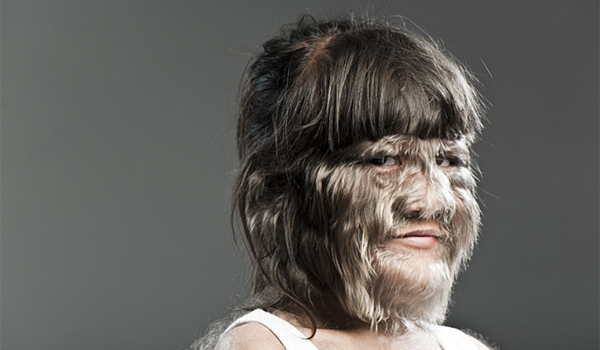Can Health Conditions Create Real Halloween Spooks?

The zombies, vampires and other fiends that will come knocking on your door this Halloween are the merely the stuff of Hollywood B movies and Old World superstitions — right?
Perhaps not, say some researchers, who claim there is scientific evidence linking Halloween spooks to rare but real medical conditions. From witches to werewolves, here's an explanation of how medical researchers may have discovered the scientific roots that underlie some of your favorite ogres:
Witches: In order to join your local coven of witches, some say you first must enter into a pact with Satan, or some such nonsense. A few researchers have speculated that a more likely explanation for supernatural behavior is the consumption of rye bread that's spoiled by a hallucinogenic fungus known as ergot (Claviceps purpurea). The fungus thrives during extended periods of cool, wet weather. [The Surprising Origins of 9 Common Superstitions]
Ergot contains some potent chemical compounds, including a precursor to LSD (lysergic acid diethylamide). People who eat bread made from ergot-contaminated rye could develop hallucinations, muscle spasms, convulsions, crawling sensations on their skin and other delusions — all of these reportedly were noted among the people accused of witchcraft during the Salem witch trials, which occurred in Massachusetts during the cool, rainy years of the early 1690s.
Though some researchers have questioned the purported link between ergot poisoning and accusations of witchcraft, others maintain that a person in the 1600s who was hallucinating and convulsing for no apparent reason could easily have been accused of being in league with the devil.
Vampires: Count Dracula wasn't evil — he simply had a bad case of porphyria, according to some medical sleuths. The porphyrias are a group of rare diseases that can be genetic or acquired; they're caused by a malfunction in the production of hemoglobin, the component in blood that carries oxygen to the cells — this can give the skin a pallid, funereal cast.
"The rarest and most horrific form of the porphyrias," Ann M. Cox wrote in 1995 in Postgraduate Medical Journal, "is congenital erythropoietic porphyria. Beginning in early childhood, congenital erythropoietic porphyria manifests itself in extreme sensitivity to light (sun). On exposure to light the skin blisters, and with infection can become so severely scarred as to leave the individual quite disfigured."
Get the world’s most fascinating discoveries delivered straight to your inbox.
Porphyria can also cause receding gums, giving the teeth a fanglike appearance. Treatments include blood transfusions, and, according to Scientific American, "in principle, it is possible to relieve the symptoms of porphyria by drinking blood — another possible link with the vampire stories."
Britain's Prince Charles has acknowledged that he is a distant relation of Vlad the Impaler, the notorious Romanian warlord who inspired the legend of the vampire Dracula — and the genetic form of porphyria is widely believed to run through the British royal family (King George III and Mary, Queen of Scots, may have had the condition). Some historians have suggested that if Vlad also had porphyria, this could be further proof that the disease helped to create the folklore of vampires.
Werewolves: The snarling, hairy man-beast that lurks beneath the light of a full moon is an ancient myth with roots in early European paganism. The perseverance of the werewolf myth, however, may be due to a disease known as hypertrichosis, also called "wolfitis." Hypertrichosis causes unusual growth of hair on the body. The condition, which can be congenital (present at birth) or acquired, is sometimes marked by patterned hair growth or a few scattered patches of unusually dense hair.
But in rare cases of terminal hypertrichosis, the growth of darkly pigmented, dense hair all over the body is accompanied by gingival hyperplasia, an overgrowth of the gum tissue that results in narrow, longer-looking teeth. It's no surprise, then, that this condition is sometimes referred to as "werewolf syndrome." [The 13 Oddest Medical Case Reports]
Zombies: Most people scoff at the idea that zombies are real, but a number of respected medical experts and academic journals have presented evidence that zombies do, in fact, exist. In Haiti — where the religion known as vodou is routinely practiced — priests create a white, powdery concoction with ingredients that allegedly can turn a person into a zombie.
In the 1980s, Harvard ethnobotanist Wade Davis discovered that the so-called "zombie powder" contains tetrodotoxin, a potent neurotoxin derived from the pufferfish. Even a tiny amount of tetrodotoxin can cause a person to lose consciousness and appear dead. Following burial, the victim can be exhumed and reappear among the living as one of the "walking dead."
After Davis published his research, additional zombie case studies came to light and were described in the British medical journal The Lancet. The authors of the Lancet report concluded that, after exposure to tetrodotoxin and burial, "it is not implausible for a retrieved person to be alive."
Mummies: There's little doubt that mummies are real — the artfully preserved remains of people (and animals) have been discovered from the pyramids of Egypt to the Andes Mountains of Argentina. What's less well known, however, is the wealth of medical information these mummies are yielding to contemporary scientists. Mummies have been found to harbor atherosclerosis, a form of heart disease wherein calcium deposits narrow the arteries. This discovery challenges the conventional wisdom that clogged arteries are caused primarily by a modern diet loaded with sugar and fats.
Other researchers have discovered that Egyptian mummies were exposed to high levels of particulate air pollution, likely caused by mining, cooking and metalworking. These discoveries are shedding light on how the lives and health conditions of people in the ancient world are similar to, and different from, people's lives today.
Follow Marc Lallanilla on Twitter and Google+. Follow us @livescience, Facebook & Google+. Original article on LiveScience.



